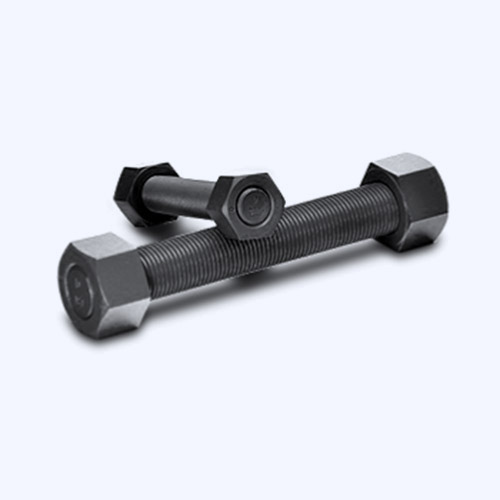Nov . 08, 2024 23:29 Back to list
Different Bolt Types with Visual Examples for Easy Identification
Types of Bolts with Pictures
When it comes to construction and manufacturing, bolts play an indispensable role in ensuring the strength and stability of structures. Understanding the various types of bolts available is crucial for selecting the right one for any given application. This article dives into the different kinds of bolts, their features, and their common uses, complete with descriptions that can help visualize each type.
1. Hex Bolts
Hex bolts are perhaps the most common type of bolt used in construction. They have a hexagonal head, which allows for easy gripping with a wrench. The body of the bolt is typically cylindrical with a uniform diameter along its length. Hex bolts are commonly used in machine construction and structural applications due to their strength and versatility.

2. Carriage Bolts
Carriage bolts are characterized by their round heads and smooth, unthreaded shanks. The square section just below the head helps to prevent the bolt from rotating when a nut is tightened. Carriage bolts are predominantly used in wood applications, such as attaching wooden beams and fixtures, as well as in metal-to-wood connections.

3. Lag Bolts
Also known as lag screws, lag bolts are heavy-duty fasteners designed for fastening wood to wood or wood to metal. They have a heavy, thick shank and a coarse thread that provides excellent holding power. Lag bolts are commonly used in construction, particularly for timber framing and heavy-duty applications.

4. Socket Head Cap Screws
These bolts feature a cylindrical head with a hexagonal hole that allows them to be tightened using an Allen wrench. Socket head cap screws are known for their strength and are often used in high-stress applications in machinery and automotive parts. Their design permits close clearance in constricted areas.

5. Eye Bolts
Eye bolts are designed with a loop or eye at one end, making them ideal for applications that involve lifting. The eye allows for the attachment of ropes, cables, or chains. Eye bolts are commonly used in rigging, as well as in maritime and industrial applications.
types of bolts with pictures


6. U-Bolts
U-bolts have a U-shaped design that wraps around an object. They are commonly used to secure pipes or rods to surfaces, offering a stable mounting point. U-bolts are often found in automotive and construction applications, especially for attaching exhaust pipes or securing structural elements.

7. Flange Bolts
Flange bolts come with a built-in flange that acts as a washer, distributing the load over a larger area. They are often used in automotive applications where a smooth, stable load distribution is required, such as in the assembly of engine parts or transmission components.

8. Set Screws
Set screws, or grub screws, are used to secure one object within another, often without requiring a nut. They are typically driven into a threaded hole and are commonly used in applications like securing pulleys and gears in machinery, ensuring components remain in place.

9. T-Bolts
T-bolts have a T-shaped head that allows them to slide into a slot, making them perfect for applications where an adjustable connection is needed, such as when attaching components to a T-slot framing system. They are widely used in building frames and machinery.

Conclusion
Choosing the right type of bolt is essential for the success of any construction or manufacturing project. Each type of bolt is designed for specific purposes, providing different levels of strength, functionality, and ease of use. Whether you're assembling furniture, constructing a building, or repairing machinery, understanding these different types of bolts will help you make informed decisions and ensure safety and durability in your projects.


